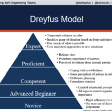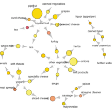Spider-Man Meets Machine Learning … and Physics
Just like data scientists, Spider-Man is a force for good, but often misunderstood. He is basically a big spider: brave, strong, and smart. In this article, we will explore his abilities, using real science (as much as possible), to answer a couple of questions:
1. How strong is Spider-Man’s silk? How much can he lift with one single chord?
2. When Spider-Man uses his silk to “fly” by jumping and swinging from one building to another, can his silk really support his weight and lift other objects during these maneuvers?
To answer the above questions using real science, we will need to make some assumptions about him. We will also need to find real data about the strength of the silk of real spiders and use this data to infer the strength of Spider-Man’s silk. Finally, we will need to use the laws of physics to answer the question of him jumping using the silk.
Because Spider-Man has been living in the shadows, no one knows his exact limits. But here is what we know as documented “facts”:
- He is a human that morphed into a spider — a big one compared with all other known spiders on Earth.
- He weighs about 75 Kg (165 lbs).
- He is about 175 cm in height (5 ft 9 in).
- Unlike Superman, Spider-Man cannot fly. He is a creature of our planet, so he cannot defy gravity. Some speculate that Superman may be able to defy gravity because his atoms somehow contain anti-gravitons — gravitons are postulated particles that are responsible for gravity, and so far, have not been experimentally confirmed. On the other hand, Spider-Man needs to use his silk to jump from one building to another. He could also use the strength of his legs to jump.
- He is very strong. There are several historical documents (comics magazines) showing that he could lift tanks weighing more than 10,000 Kg (about 3 Ford F150 trucks). Although these tanks are considered small when compared with say the big M1A1 Abrams (62,000 Kg), it is still impressive that he can lift a 10,000 Kg tank (and smash it).
- Some reports confirm that he has web-shooting glands in his forearms to eject the silk from small openings in his wrists. Other reports claim that he is using a high-tech gadget to eject a jet of special material in one or two canisters fixed to his arms. I consider the reports confirming the glands more reliable, because it is more consistent with his morphing process from a normal human to the spider-like creature: “Spider-Man”.
- His silk can attach and glue itself to surfaces such as building, windows, etc. The binding force between the silk and the surfaces is stronger than the strength of the silk.
- He can retract the silk thread back into his arms. This is how he can pull himself up while suspended in his silk. And he can do that with very high speed. We don’t have reliable data to support any estimate of the speed of retracting his silk.
Spider-Man meets RapidMiner
Now that we established the facts about Spider-Man, let’s use Machine Learning to estimate the strength of his silk. We will do that by developing models using the data we have on the mechanical properties of the silk of about 200 spider species. This data is available at https://spider-silkome.org/mechanical_properties. I used the Altair’s ML modelling software RapidMiner to estimate the strength of the silk of Spider-Man using his body size, and the expected size of his silk. I estimated that his silk has a diameter of 2 mm and his body size is 175 cm.
Using the data of the mechanical properties of real spiders, I found that the gradient boosted decision tree in RapidMiner gives the most accurate model, which I then used to estimate the Ultimate Tensile Strength (UTS) of Spider-Man’s silk. (UTS is the maximum stress a material can withstand while being stretched before breaking). This model is shown in Figure 2.
The estimated value of UTS for Spider-Man’s silk is 310 GPa, making it much stronger than any known material on earth. To put things in perspective, the UTS of the common structural steel (known as rebar Grade 60) is only 0.62 GPa, making Spider-Man’s silk roughly 500 times stronger than rebar grade 60.
With that UTS, a 2 mm diameter Spider-Man silk can carry a load of up to roughly 100 tons. So that, Spider-Man’s silk can lift more load than the maximum load that we know that Spider-Man did lift. That answers our first question about the strength Spider-Man’s silk.
One (big) weakness of the ML model used to estimate the UTS of the silk is that the Spider-Man’s body size is way out of the range of the model training data. The spiders in the dataset have body sizes ranging from 2 to 38 mm, while Spider-Man characteristic size (height) is 1,750 mm. In normal circumstances where we are developing a serious ML model for a real application, this model would not be acceptable. But since we are dealing with a superhero, we will accept the estimates of the model.
Now, let’s answer the second question: Can this silk take the force in while he is swinging between buildings?
Figure 3 below shows Spider-Man at position A at the top of a building and at position B at the vertical position during a swing.
As the figure shows, a simple energy balance requires that his velocity (squared) at position B is given by
v^2 = 2 g L.
Figure 4 shows the forces acting on Spider-Man at point B and his acceleration (in red).
Using Newton’s second law of motion, we get
T — mg = ma
From the kinematics at point B, the acceleration of Spider-Man’s body is an upward centrifugal acceleration given by
a = v^2 / L
Simple substitution in the equation of motion and using the value of the velocity from the energy balance, we get
T = 3 mg.
Therefore, the tension in the silk is three times the weight of Spider-Man. And as we derived earlier, the 2 mm silk can take a force of almost 100 tons, which is much more than the tension during a swing as a result of only the weight of Spider-Man. It is clear now that Spider-Man can easily use his silk to do these swinging maneuvers, and even lift many people, cars, and heavy objects along with him.
Conclusions
Spider-Man is very strong. His silk is also very strong; if it existed, it would be stronger than any known material on earth. He will have no difficulty lifting 100 tons using only one chord. We used machine learning (admittedly not in a perfect way) and mechanics to prove these interesting results.
I encourage data scientists to use the above data and experiment with RapidMiner software to estimate other properties of Spider-Man’s silk and share their findings with all Spider-Man’s fans. Who knows, maybe he really exists out there and is reading this!








